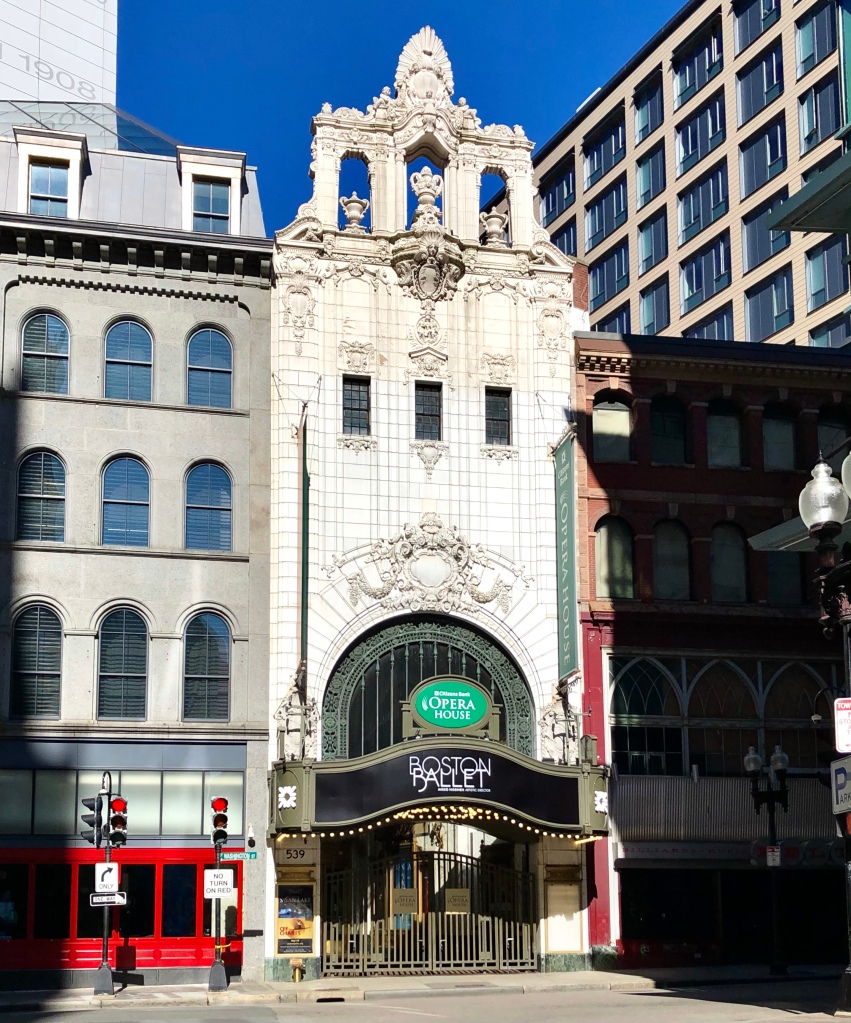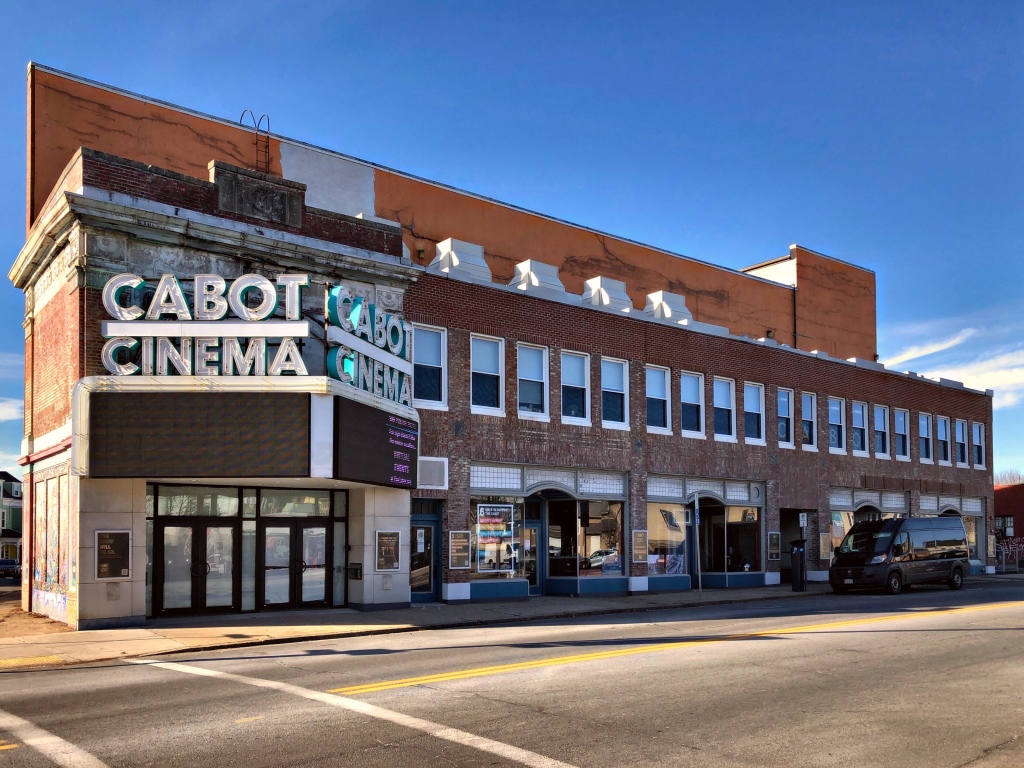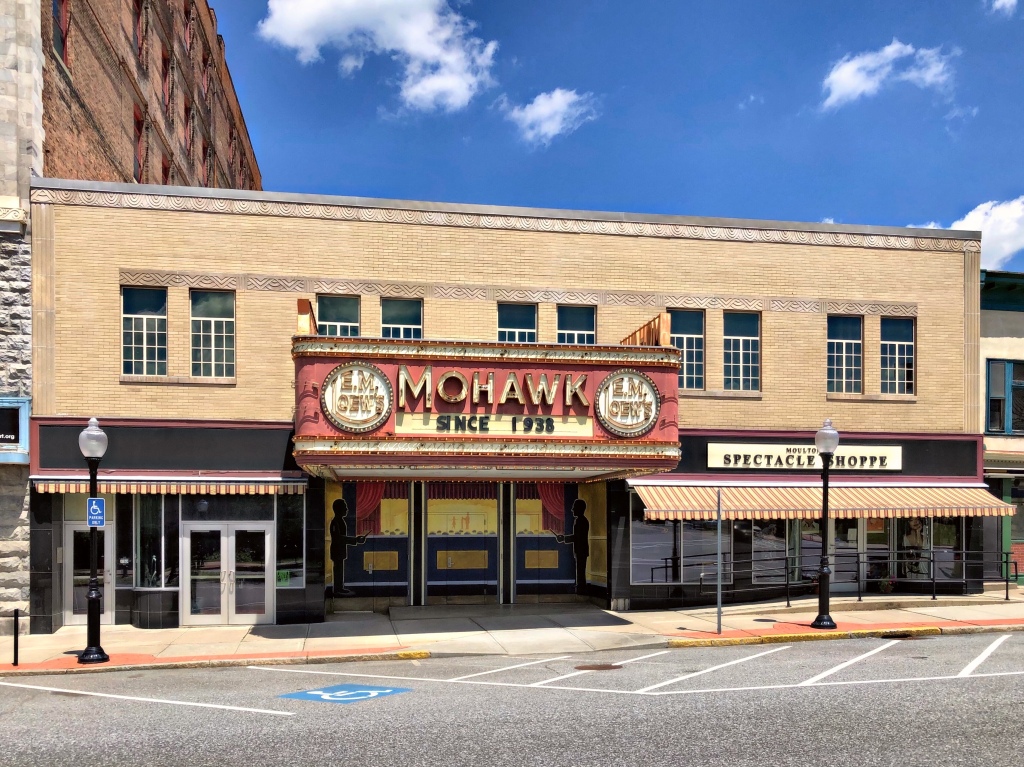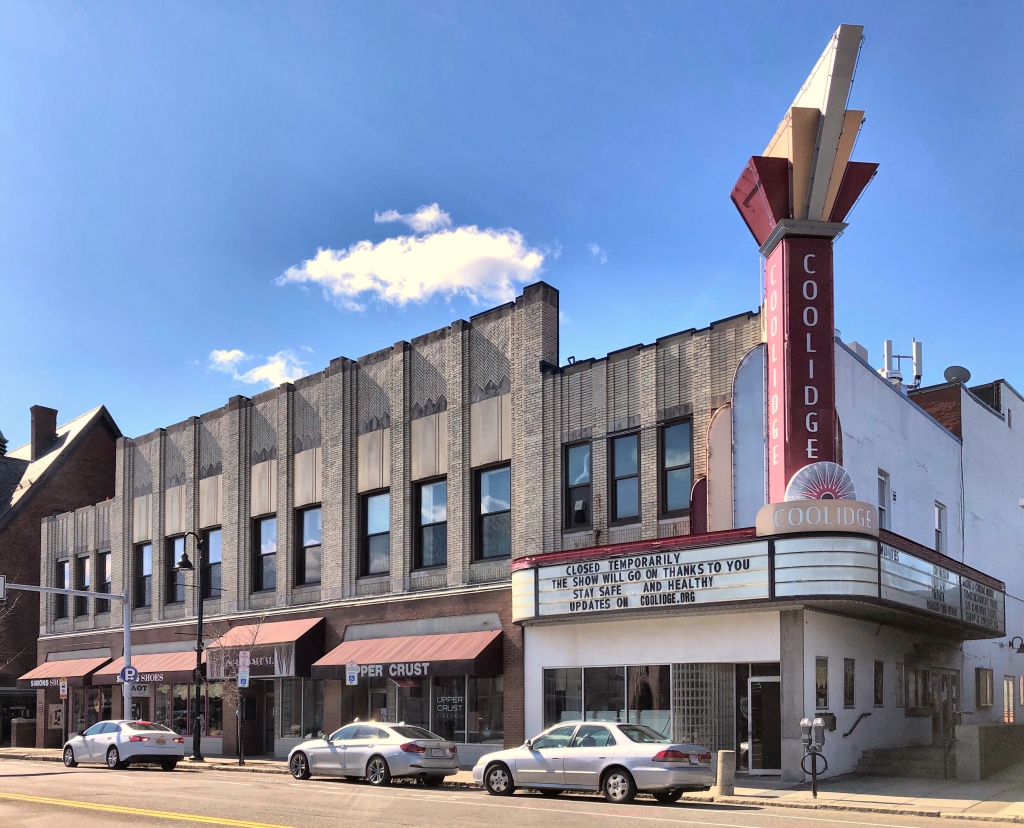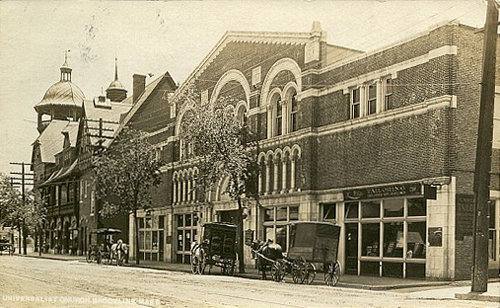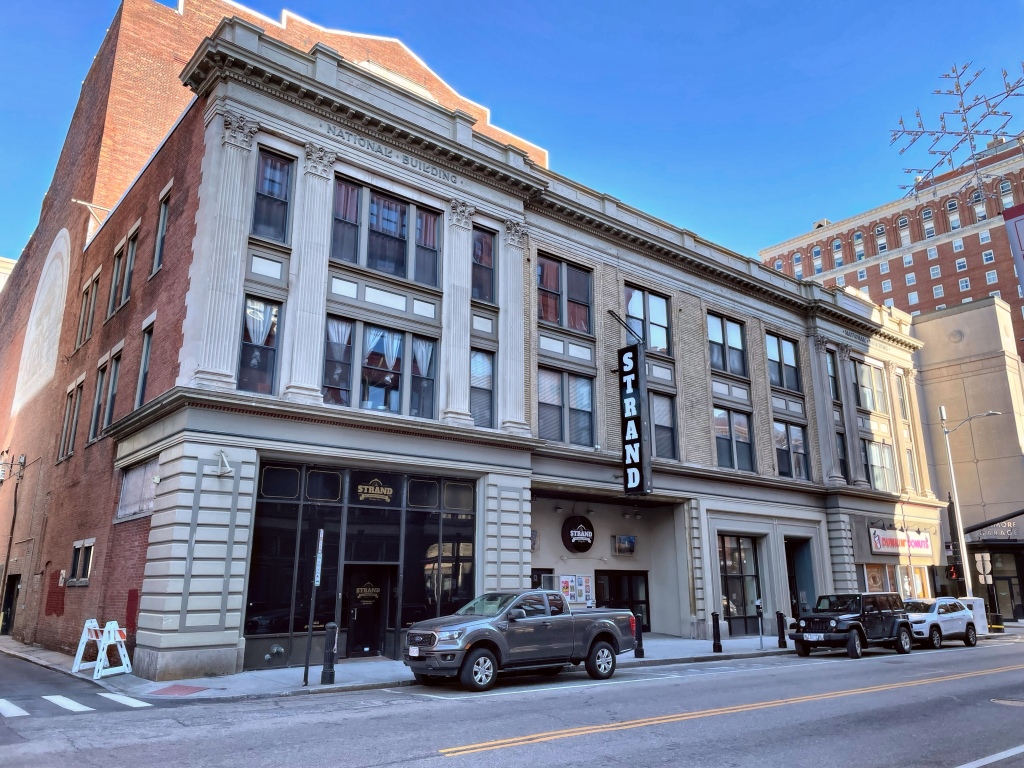
This three-story brick and stone building in Downtown Providence was built in 1915 as a motion picture theatre, one of the first purpose-built movie houses in the city. Local architect Thomas J. Hill Pierce designed the building which had a central theatre core with offices at the street which enhanced the
building’s income by optimizing rental space and providing a sound buffer between the street and the auditorium. Taken over by Publix, the building was briefly known as the Paramount Theatre from 1930-34, when the Strand name was restored. After WWII, populations were moving farther and farther from downtown, the theater struggled to attract customers, so like many other downtown movie theaters, the Strand shifted its clientele by featuring adult films, a revenue stream that only worked for a few years before the owners converted some of the auditorium space into commercial/office use. When Downtown Providence began to see a resurgence, owners re-opened the old Strand as a live music venue, known as Lupos Heartbreak Hotel and Roxy Providence. In 2017, new owners closed the theatre for a three month, $1 million renovation project, reopening as the Strand Ballroom, a wildly popular venue.
